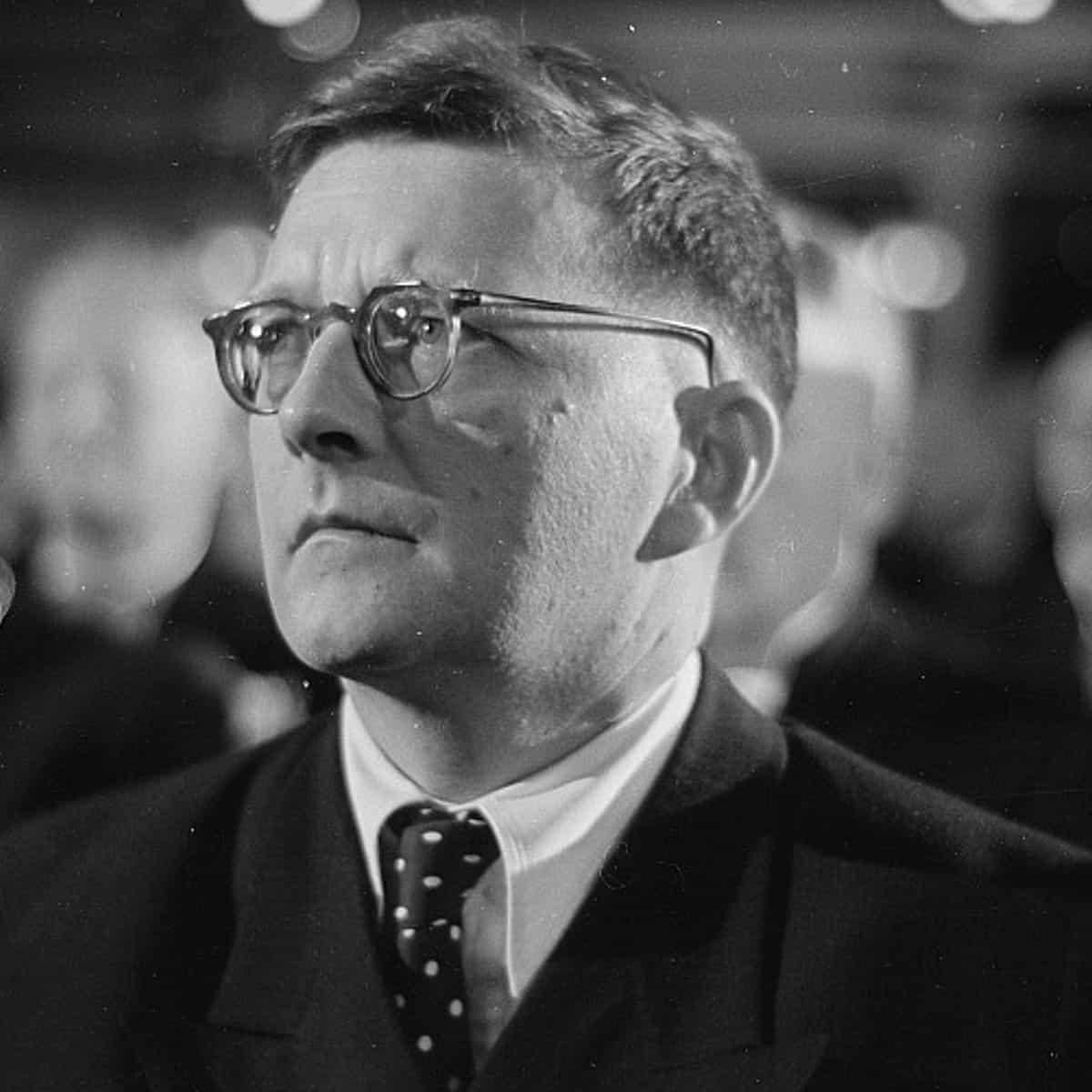
Shostakovich’s sudden re-marriage in the summer of 1956 caught even his closest friends by surprise. His first wife, the physicist Nina Varzar, had died suddenly in December 1954, and eighteen months later the shy composer impulsively proposed to a pretty young party official, Margarita Kainova. She just as impulsively accepted, and they were married in July 1956. Such a marriage seems fated to fail, and in fact this one did (they were divorced three years later), but the beginning was happy and Shostakovich took his bride on a honeymoon to Komarovo. It was there, during the first month of his new marriage, that he wrote his String Quartet No. 6, completing it on August 31. The first performance was given in St. Petersburg by the Beethoven Quartet on October 7, 1956, two weeks after Shostakovich turned fifty.
Preview on Spotify:
Along with the First, the Sixth is the most light-hearted of the cycle of Shostakovich quartets. Despite some moments of stridency in the development sections of its outer movements, this quartet has an almost divertimento-like character. It is melodic and relaxed, and while based on rigorous forms—sonata-form outer movements, scherzo, and passacaglia—the music does not depend on conflict and resolution. Beneath its genial surfaces, however, the Sixth is constructed with a remarkable degree of unity, a unity that grows out of its cyclic treatment of themes.
Over the viola’s steady pulse, violins in thirds sing the Allegretto’s long opening melody. Note particularly the first three notes of that duet: the figure of two eighth notes as a pick-up to downbeat will run throughout the quartet’s thematic material. First violin has the relaxed second idea, and while the movement slips into a very active development in E-flat minor, matters calm down quickly and the music winds its way to a quiet close. The five-note cadence, which Shostakovich marks poco espressivo, will return to close out the other three movements as well.
Shostakovich Saturday Morning Series
4 Saturdays at 10am
1/21, 2/4, 3/4 and 5/13, 2017
Herbst Theatre
$55/$45/$30
TICKETS
MARCH 4:
Quartet No. 5 in B-flat Major, Op. 92
Quartet No. 6 in G Major, Op. 101
MAY 13:
with Roger Woodward, piano
Piano Quintet in G minor, Op. 57
Quartet No. 7 in F-sharp minor, Op. 108
The Moderato con moto begins as a genial scherzo in E-flat Major, with the first violin once again leading the way. That instrument also dominates the slithery, chromatic trio section; Shostakovich combines both themes in the reprise, and the movement comes to a very quiet close.
The third movement is a passacaglia based on the cello’s opening ten-measure bass line. Gradually the upper voices enter, and the counterpoint grows complex before textures thin out over the final two repetitions of the ground. The subdued ending, again marked poco espressivo, leads without pause into the finale, which begins slowly but soon presses ahead. The three-note figure that dominated the first movement is much in evidence here, both in the violin’s opening idea and the cello’s chugging second subject. As the quartet nears its conclusion, Shostakovich brings back the ground bass of the passacaglia in the viola and cello, and then—as tensions subside—he mutes all four instruments, and the Sixth Quartet draws to its conclusion on a silky Andante. The music dies away on one final restatement of the five-note cadence figure.
